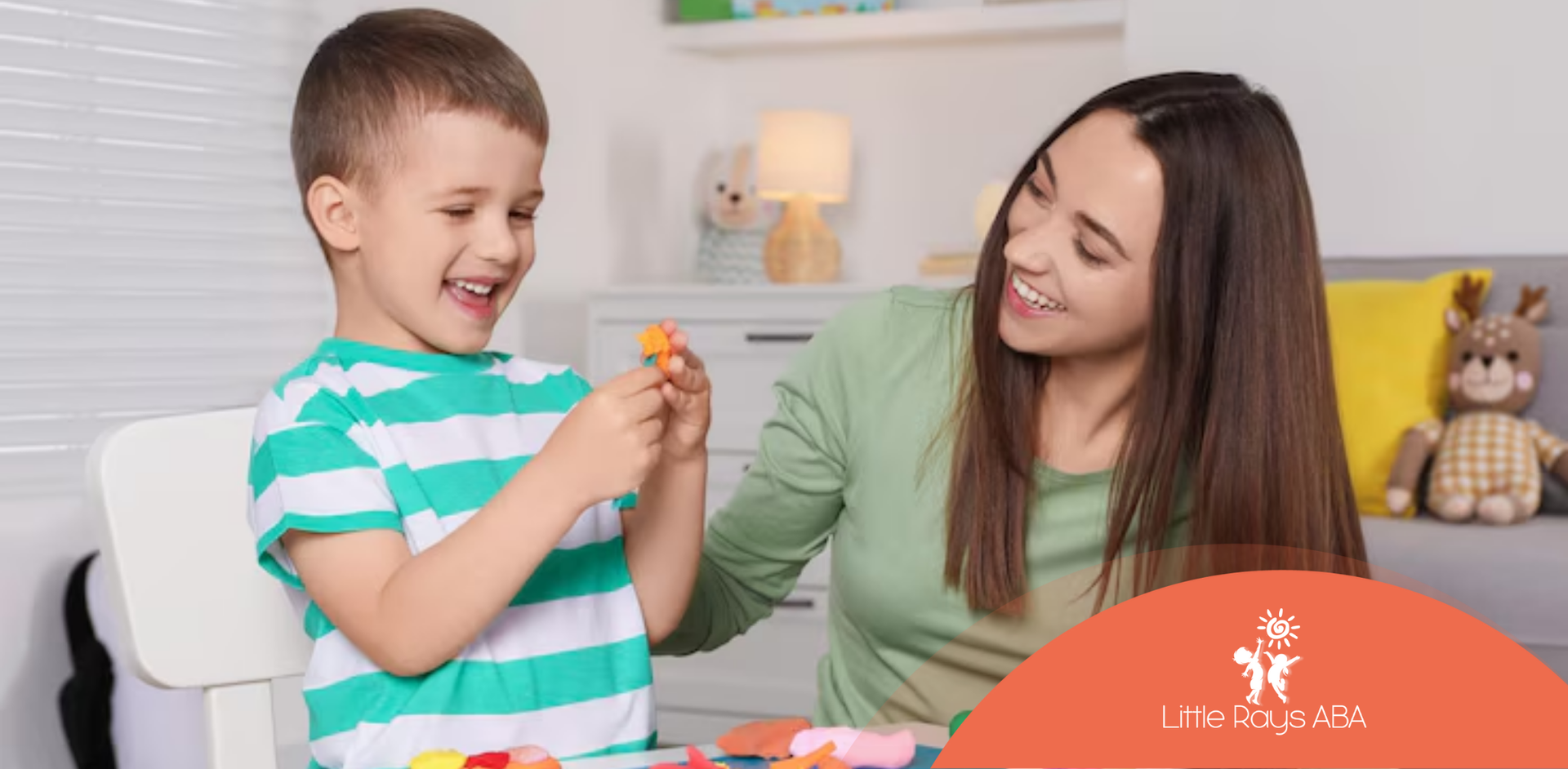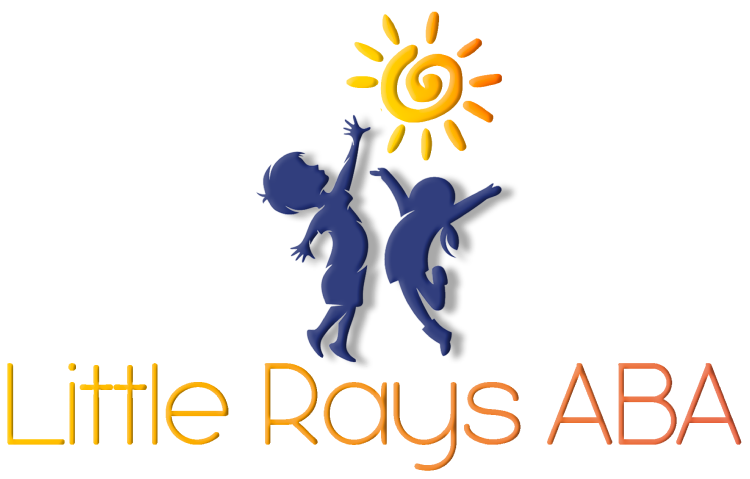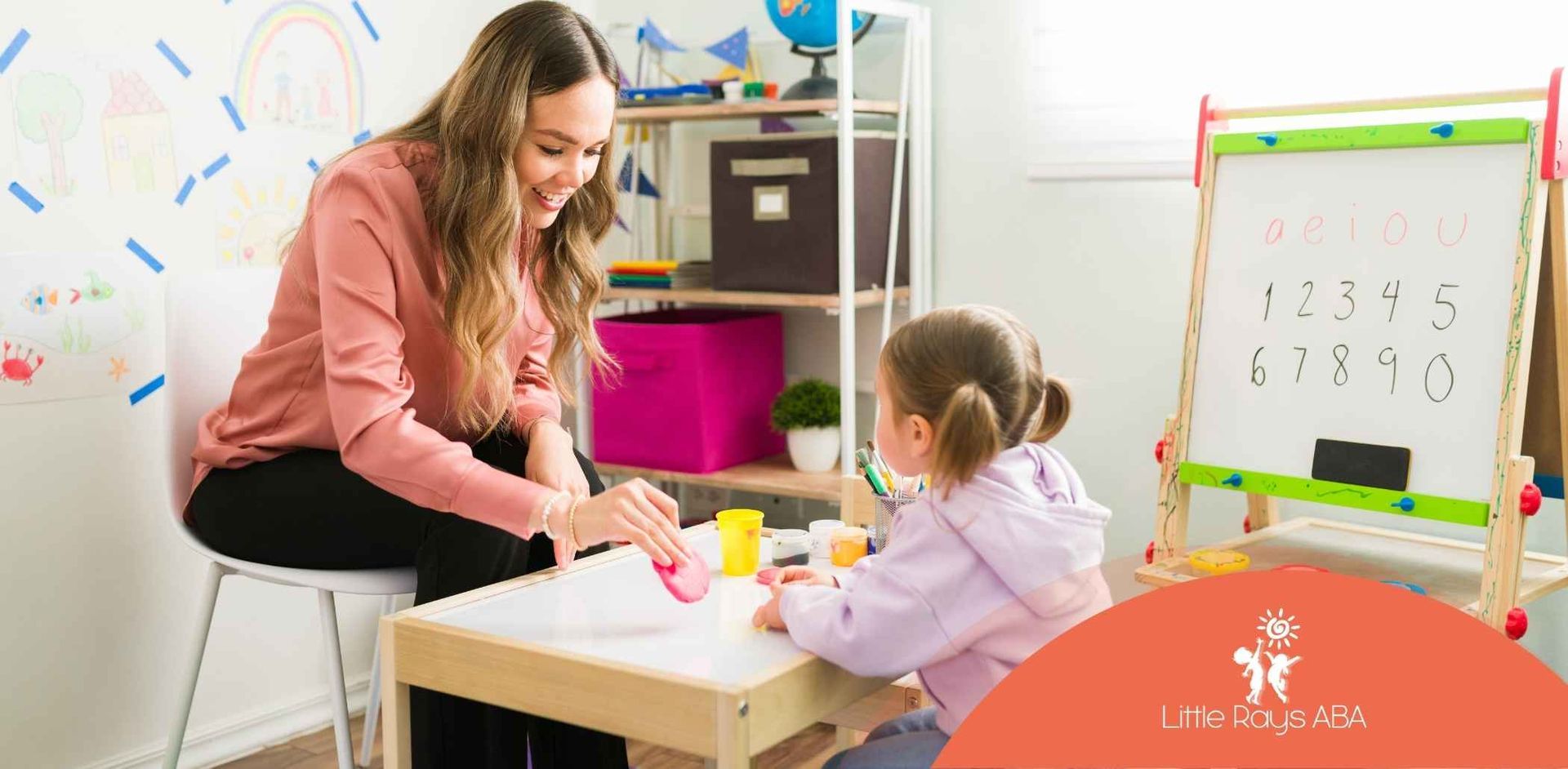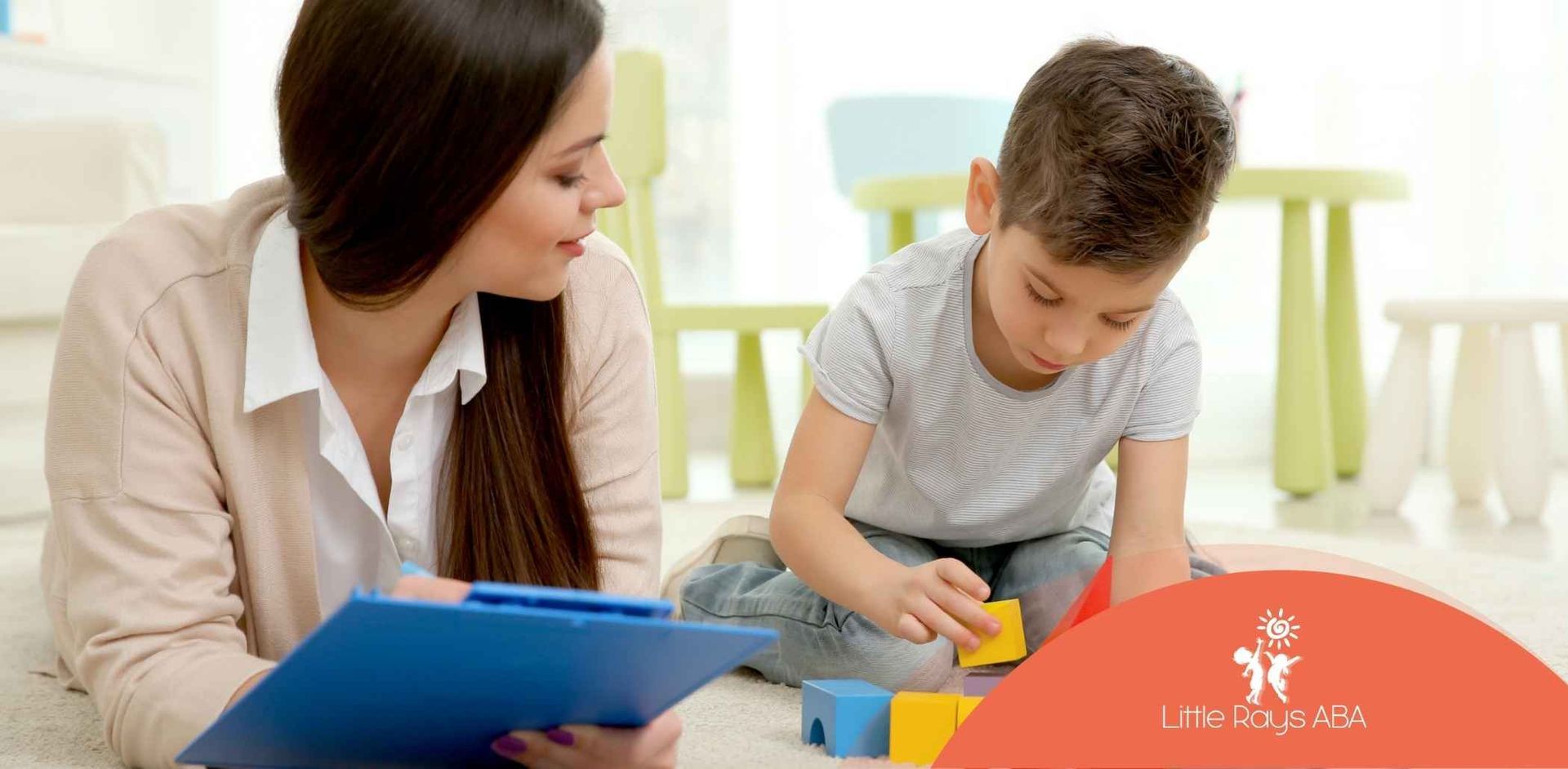
How to Set ABA Goals: A Step-by-Step Guide for Parents and Caregivers
When it comes to working with children with autism, setting clear, measurable goals is a crucial part of the therapy process. Applied Behavior Analysis (ABA) therapy is one of the most widely used and effective treatments for children with autism spectrum disorder (ASD), and goal-setting plays a key role in helping children reach their full potential. But how exactly do you set ABA goals? In this guide, we’ll break down the process of setting ABA goals, provide tips on how to make them effective, and explain why the right goals matter.
Whether you’re a parent just starting ABA therapy or a caregiver looking to understand the process better, this blog post will help you navigate goal-setting in ABA therapy with confidence.
What Are ABA Goals?
In ABA therapy, goals are specific, measurable outcomes that a child works toward over time. These goals are typically based on the child’s individual needs, focusing on areas like communication, social skills, behavior, self-help skills, and academic skills. The purpose of setting goals in ABA is to promote meaningful changes in the child’s behavior and improve their ability to function in everyday situations.
Types of ABA Goals
ABA goals generally fall into one of these broad categories:
- Communication Goals: These focus on improving verbal and non-verbal communication skills. For example, teaching a child to use a communication device, sign language, or words to request items or express needs.
- Behavior Goals: These are designed to decrease problematic behaviors and increase appropriate ones. For instance, reducing tantrums or teaching a child how to manage frustration more effectively.
- Social Skills Goals: These goals aim to improve a child’s ability to interact with others. It could include learning how to make eye contact, take turns in a conversation, or engage in cooperative play.
- Self-Help/Adaptive Skills: These goals focus on increasing independence in daily activities such as dressing, eating, and grooming.
- Academic/Pre-Academic Skills: These goals may be related to learning skills like letter recognition, following instructions, or understanding numbers.
By setting clear, measurable goals in each of these categories, ABA therapy can help children with autism build the skills they need to live a more independent and fulfilling life.
Why Is Setting ABA Goals Important?
Setting effective goals in ABA therapy is essential because it:
- Provides a roadmap for progress: Clear goals help guide the direction of therapy and ensure that the work done is focused on the child’s most important needs.
- Makes progress measurable: Goals are designed to be specific and measurable, making it easy to track improvements over time.
- Improves motivation: When goals are well-defined and achievable, children are more likely to stay motivated and engaged in the learning process.
- Encourages consistency: Goals help ABA therapists, parents, and caregivers stay on the same page, ensuring consistency in the child’s treatment plan and everyday activities.
- Supports positive outcomes: The ultimate aim of ABA therapy is to teach children new skills and reduce challenging behaviors, and goal-setting is central to achieving this outcome.
How to Set Effective ABA Goals
Setting goals in ABA therapy is not a one-size-fits-all approach. Every child with autism has unique strengths, challenges, and needs, and their goals should reflect those individual factors. Below is a step-by-step process to help you set effective ABA goals for your child.
1. Conduct a Functional Behavior Assessment (FBA)
The first step in setting ABA goals is to conduct a thorough assessment of your child’s behavior, skills, and needs. This is often done through a Functional Behavior Assessment (FBA), which helps identify the child’s strengths, challenges, and reasons behind certain behaviors.
An FBA typically involves gathering information through observation, interviews with caregivers, and reviewing the child’s history. The assessment helps the ABA therapist understand the root cause of behaviors and can provide insights into which areas require intervention.
Once the assessment is complete, the information gathered will be used to create individualized goals that are both meaningful and attainable for the child.
2. Identify Priority Areas
Based on the results of the FBA, the next step is to identify the priority areas that need attention. These areas can include behaviors that need to be reduced (like aggression or elopement), skills that need to be developed (like communication or social skills), or everyday activities that need to be improved (like self-care routines).
Choosing which goals to prioritize will depend on the child’s immediate needs and the importance of addressing these goals for their overall development. For example, if a child struggles with communication and has difficulty expressing needs, communication goals may take priority over other areas.
3. Make Goals Specific and Measurable
Once the priority areas are identified, the next step is to set specific and measurable goals. Each goal should be clear and concise, outlining exactly what the child needs to learn or improve.
Specificity means the goal should clearly define the behavior or skill being targeted. For example, rather than a broad goal like “Improve communication,” a specific goal would be “Increase the child’s use of three-word sentences to request help.”
Measurability ensures that the goal can be tracked and evaluated. For example, instead of saying “Improve social skills,” a measurable goal would be “The child will make eye contact during a conversation 80% of the time.”
The SMART goal framework is often used in ABA therapy, which stands for:
- Specific
- Measurable
- Achievable
- Relevant
- Time-bound
4. Break Down Goals into Smaller Steps
Large, complex goals can often be overwhelming, so it’s important to break them down into smaller, more manageable steps. This is often referred to as task analysis.
For example, if the goal is to teach a child to tie their shoes, you would break the process down into smaller steps, such as:
- Hold the laces.
- Cross the laces over each other.
- Make a loop with one lace.
- Pull the other lace through the loop, etc.
Each small step becomes its own goal, and as the child masters each step, they work toward the larger goal of being able to tie their shoes independently.
5. Incorporate Reinforcement
In ABA therapy, reinforcement plays a vital role in achieving goals. Reinforcers are used to motivate children to engage in target behaviors and achieve goals.
Positive reinforcement could be anything from verbal praise, tokens, or a favorite activity. It’s important to choose reinforcers that are meaningful to the child and will encourage them to stay engaged in the learning process.
For example, if the goal is for the child to use a communication device to request items, the therapist or caregiver can provide positive reinforcement every time the child successfully uses the device to make a request.
6. Set Realistic and Achievable Goals
While it’s important to challenge children, it’s equally important to set goals that are realistic and achievable within a reasonable time frame. Goals that are too difficult may result in frustration and a lack of motivation, while goals that are too easy may not promote the child’s growth.
Achieving the right balance is key, and goals should be adjusted as the child progresses. Regular data collection and monitoring will allow you to make necessary adjustments to ensure that goals remain attainable and challenging.
7. Review and Adjust Goals Regularly
ABA therapy is a dynamic process, and goals should be reviewed and adjusted regularly based on the child’s progress. Regular assessment allows you to determine whether the goals are still relevant or if new goals need to be set.
Adjusting goals also helps to keep the child engaged and motivated. As children make progress, new challenges and opportunities for growth should be introduced.
Final Thoughts
Setting ABA goals is a critical component of effective therapy for children with autism. By following a structured process that includes assessment, prioritization, specificity, and regular adjustments, you can help ensure that your child’s ABA therapy is focused on the most important areas for their development.
At Little Rays ABA, we specialize in creating individualized ABA goals for each child based on their unique needs and abilities. Our approach ensures that therapy is effective, engaging, and tailored to the child’s growth and progress.
If you're looking for personalized ABA therapy that prioritizes meaningful, achievable goals, we are here to help.
Frequently Asked Questions
How do I know if an ABA goal is appropriate for my child?
An appropriate ABA goal should be tailored to your child’s current abilities, needs, and challenges. It should be specific, measurable, and achievable. A thorough assessment by an ABA therapist can help determine which goals are most appropriate.
Can ABA goals be adjusted if progress is slow?
Yes, ABA goals are flexible. If progress is slower than expected, goals can be adjusted to be more realistic or broken down into smaller steps to make them more achievable.
How often should ABA goals be reviewed?
ABA goals should be reviewed regularly, typically every few weeks or months, depending on the child’s progress. This allows for necessary adjustments and ensures that the therapy remains aligned with the child’s evolving needs.
Sources:
- https://lingraphica.com/aac-devices/autism-aac-device/
- https://www.autismparentingmagazine.com/autism-functional-behavioral-assessment/
- https://moveupaba.com/
- https://www.autismspeaks.org/autism-aggression
- https://pmc.ncbi.nlm.nih.gov/articles/PMC11487924/
Related Posts





